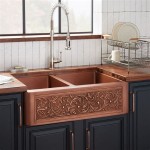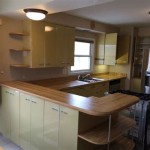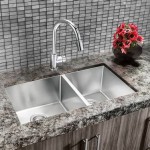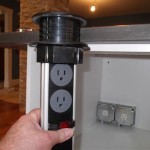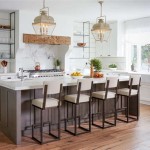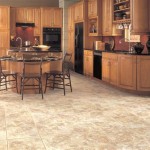How To Choose Knobs And Pulls For Kitchen Cabinets
Selecting the right hardware for kitchen cabinets is a significant design decision that impacts both the aesthetic appeal and the functionality of the space. Knobs and pulls, often considered small details, contribute substantially to the overall look and feel of a kitchen. Thoughtful consideration of style, size, finish, and placement is essential to achieve a cohesive and practical design.
The vast array of options available can be overwhelming. From traditional to contemporary styles, numerous materials, and varying sizes, navigating the selection process requires a systematic approach. This article provides a comprehensive guide to choosing knobs and pulls for kitchen cabinets, covering key considerations and offering practical advice to help homeowners make informed decisions.
Assess Your Kitchen Style
The overarching style of the kitchen is the primary determinant in selecting appropriate hardware. Knobs and pulls should complement the existing design elements, including cabinet style, countertop material, backsplash, and appliances. An incongruent choice can detract from the overall aesthetic.
For traditional kitchens characterized by intricate details, raised-panel cabinet doors, and classic color palettes, ornate knobs and pulls often provide a fitting accent. Styles featuring antique brass, oil-rubbed bronze, or pewter finishes, with details like rosettes, curves, or ceramic inserts, can enhance the traditional aesthetic. Consider incorporating hardware that echoes other design elements in the kitchen, such as the faucet or lighting fixtures.
Contemporary kitchens typically feature clean lines, minimalist designs, and sleek surfaces. In these spaces, simple, modern hardware styles are generally preferred. Tubular bar pulls, minimalist knobs with geometric shapes, or integrated pulls that are flush with the cabinet door can reinforce the contemporary aesthetic. Stainless steel, brushed nickel, and matte black finishes are commonly used in modern kitchens to achieve a streamlined and sophisticated look.
Transitional kitchens blend elements of both traditional and contemporary styles. This hybrid approach offers flexibility in hardware selection. Opt for knobs and pulls that bridge the gap between the two styles. For example, simple shaker-style cabinets can be paired with slightly more decorative knobs and pulls that have clean lines but incorporate subtle details. Consider using a mix of knobs and pulls within the same kitchen to add visual interest, ensuring that the finishes and styles are complementary.
Farmhouse kitchens emphasize rustic charm and functionality. Cup pulls, bin pulls, and simple knobs in finishes like antique copper, wrought iron, or distressed wood are often used to enhance the farmhouse aesthetic. These hardware choices evoke a sense of history and craftsmanship. Consider using a variety of hardware styles to create a collected and layered look, which is characteristic of farmhouse design.
In addition to the overall style, consider the specific features of your cabinets. For larger cabinets and drawers, longer pulls are generally more appropriate, while smaller cabinets and drawers may benefit from smaller knobs or pulls. The size and shape of the hardware should be proportional to the cabinet or drawer it is attached to.
Determine Appropriate Size and Spacing
Selecting the correct size and spacing of knobs and pulls is crucial for both aesthetics and ergonomics. Hardware that is too small can appear insignificant, while hardware that is too large can overwhelm the cabinets. The ideal size and spacing will depend on the dimensions of the cabinets and drawers, as well as the user's personal preference.
For knobs, a diameter of 1 inch to 1.25 inches is generally suitable for most kitchen cabinets. However, consider using larger knobs for larger cabinet doors to maintain visual balance. Smaller knobs, around 0.75 inches in diameter, may be appropriate for smaller drawers or upper cabinets.
For pulls, the length is typically measured from center to center, which refers to the distance between the screw holes. A general guideline is to choose pulls that are approximately one-third the length of the cabinet drawer. For example, a 12-inch drawer would ideally be paired with a 4-inch pull. However, this is not a strict rule, and personal preference should also be considered.
For wider drawers, consider using longer pulls or two pulls per drawer. Using two pulls provides better balance and distributes the weight more evenly when opening the drawer. The spacing between the two pulls should be equal, and the pulls should be positioned symmetrically on the drawer front. A good rule of thumb is to divide the drawer front into thirds and place the pulls in the center of the outer thirds.
When replacing existing hardware, it is often easiest to choose knobs and pulls that match the existing hole spacing. This eliminates the need to drill new holes, simplifying the installation process. However, if you are willing to drill new holes, you have greater flexibility in selecting the size and style of your hardware.
In addition to the size and spacing, consider the projection of the hardware. The projection refers to the distance the knob or pull extends from the cabinet door or drawer. Ensure that the projection is sufficient to allow for a comfortable grip, especially for individuals with larger hands. However, avoid hardware with excessive projection, as it can create a tripping hazard or snag clothing.
Mock up different hardware sizes and positions on your cabinets before making a final decision. Use painter’s tape to temporarily attach the hardware and assess the appearance and ergonomics from different angles. This will help you visualize the final result and make any necessary adjustments.
Consider Material and Finish
The material and finish of kitchen cabinet hardware play a significant role in both the aesthetic appeal and the durability of the hardware. The material determines the weight, texture, and overall feel of the hardware, while the finish affects its color, sheen, and resistance to wear and tear.
Common materials used for kitchen cabinet hardware include brass, stainless steel, zinc, iron, and aluminum. Brass is a durable and corrosion-resistant material that is often used for traditional and transitional styles. Stainless steel is a popular choice for modern kitchens due to its sleek appearance and resistance to rust. Zinc is a cost-effective option that can be cast into various shapes and finished in a variety of colors. Iron is a strong and durable material that is often used for farmhouse and rustic styles. Aluminum is a lightweight and corrosion-resistant material that is commonly used for contemporary hardware.
The finish of the hardware can significantly alter its appearance. Common finishes include polished chrome, brushed nickel, oil-rubbed bronze, antique brass, matte black, and white. Polished chrome offers a bright and reflective surface that is often used in modern kitchens. Brushed nickel provides a softer and more subtle sheen that is suitable for both traditional and contemporary styles. Oil-rubbed bronze offers a warm and rustic look that is commonly used in traditional and farmhouse kitchens. Antique brass provides a vintage and timeless appeal that is appropriate for traditional and transitional styles. Matte black offers a modern and sophisticated look that is often used in contemporary kitchens. White offers a clean and versatile look that can be used in a variety of kitchen styles.
Consider the existing finishes in your kitchen when selecting hardware. The hardware finish should complement the other metal elements in the kitchen, such as the faucet, lighting fixtures, and appliances. Coordinating the finishes will create a cohesive and unified look. If you are unsure which finish to choose, consider selecting a neutral finish like brushed nickel or matte black, which can complement a wide range of kitchen styles.
The durability of the finish is also an important consideration. Choose finishes that are resistant to scratches, corrosion, and tarnishing. High-quality finishes will maintain their appearance over time, even with frequent use and exposure to moisture and cleaning products. Powder-coated finishes are known for their durability and resistance to wear and tear. Plated finishes can also be durable, but the quality of the plating process is crucial. Avoid finishes that are prone to chipping or peeling, as they will quickly detract from the appearance of your kitchen.
Consider the maintenance requirements of different finishes. Some finishes, such as polished chrome, may require frequent cleaning to remove fingerprints and water spots. Other finishes, such as brushed nickel, are more forgiving and require less maintenance. Choose a finish that aligns with your lifestyle and cleaning habits.
The choice of material and finish should also reflect the overall budget for the kitchen renovation. High-quality materials and finishes will typically be more expensive, but they will also provide greater durability and longevity. Consider investing in high-quality hardware for frequently used cabinets and drawers, and opt for more affordable options for less frequently used areas.

6 Tips To Choose The Right Cabinet Hardware Signature Home Services

How To Choose Kitchen Cabinet Hardware In 6 Easy Steps
:max_bytes(150000):strip_icc()/easy-steps-to-install-cabinet-hardware-1822225-07-0a31994a76dd450ba41b2ba2ba6e3d59.jpg?strip=all)
How To Select Cabinet Knobs And Pulls

How To Choose Kitchen Cabinet Hardware Fairview Millwork

Knobs Pulls How To Choose The Right Kitchen Cabinet Hardware Riverstone Kitchens Calgary Custom Cabinetry Renovations
:max_bytes(150000):strip_icc()/how-to-select-cabinet-knobs-and-pulls-2109441-01-23c5bea8ce52471bb43ae2c20f183e27.jpg?strip=all)
How To Select Cabinet Knobs And Pulls

5 Tips On Choosing The Right Kitchen Cabinet Hardware

A Guide To Choosing Kitchen Cabinet Fittings

Knobs Vs Pulls How To Choose Which One I Should Use Dc Drawers

How To Choose Kitchen Cabinet Hardware 2024
Related Posts

